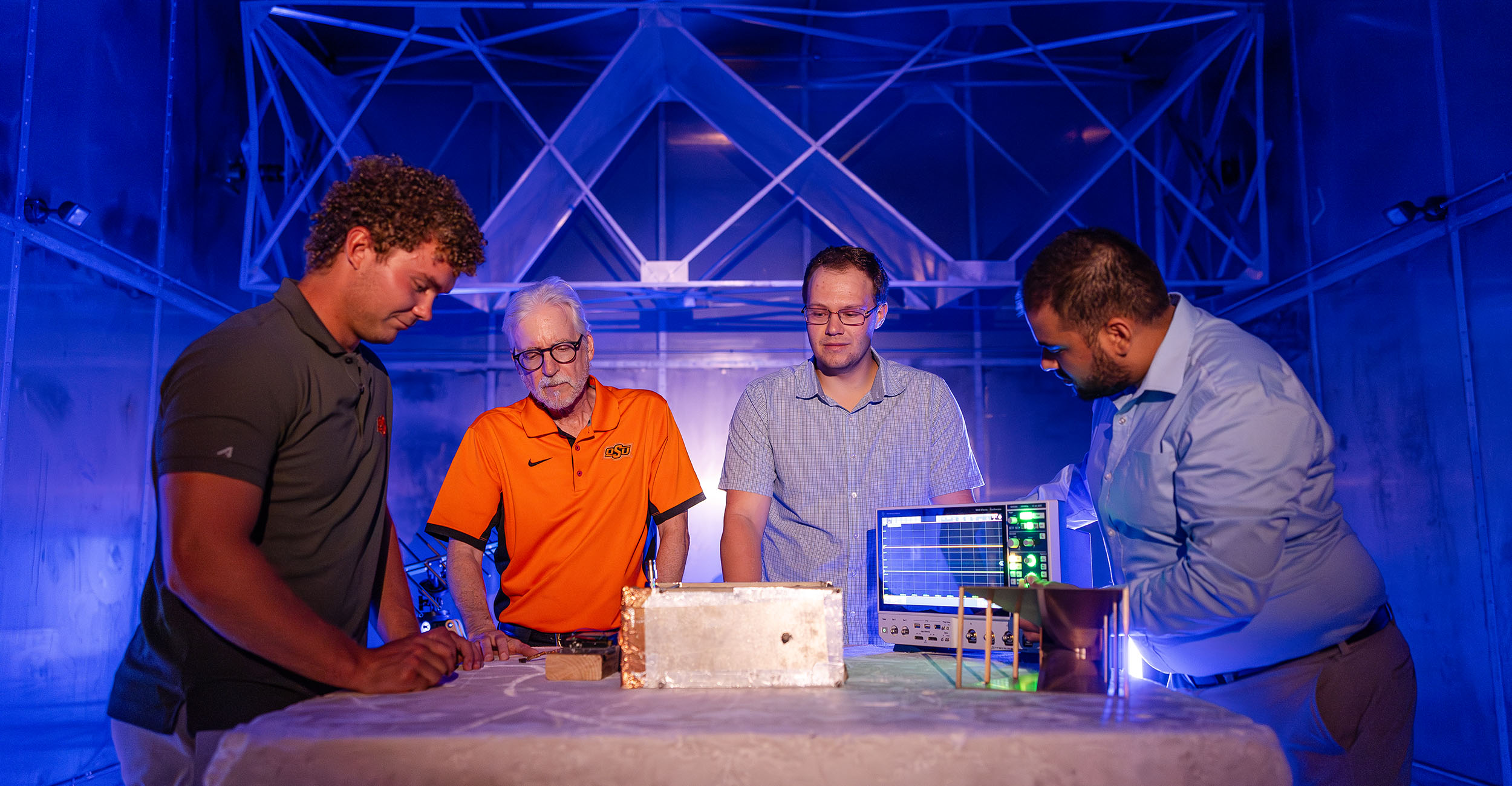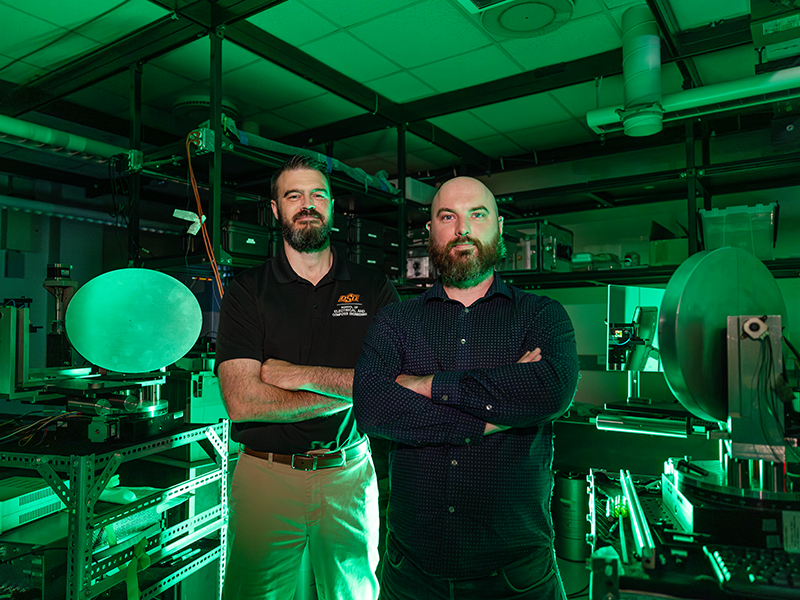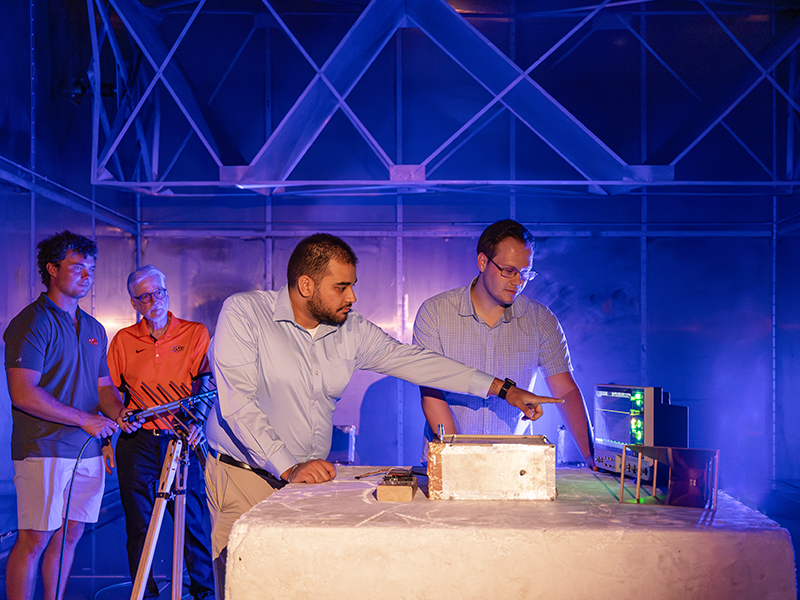
Research Stronghold: Why CEAT is built for the future of research
Thursday, October 2, 2025
Media Contact: Kristi Wheeler | Manager, CEAT Marketing and Communications | 405-744-5831 | kristi.wheeler@okstate.edu
At the College of Engineering, Architecture and Technology, research isn’t a side pursuit. It’s the college’s backbone. It shapes classrooms and opens new doors for students and faculty alike. And as the federal funding landscape grows more uncertain, CEAT isn’t just keeping pace. It’s gaining ground.
Over the last five years, CEAT has seen research expenditures grow by more than 90%. That momentum didn’t come by accident. It’s the result of bold faculty hires, strong internal support systems and an unwavering focus on impact — locally, nationally and globally.

“We don’t just tell faculty we support them — we show them,” said Dr. Chuck Bunting, associate dean of research. “That starts with things like startup funding, lab space and grant development support. But more than that, it’s about culture. It’s about creating a community where faculty know they can build something meaningful.”
From fire safety and aerospace to energy efficiency and robotics, CEAT is a place where research thrives and where researchers stay.
Across CEAT, evidence is everywhere. Robotics and electrical engineering are attracting tenured faculty back to Stillwater where they started. CEAT researchers are developing interdisciplinary fire safety models, prototyping unmanned aerial systems, and improving public safety through engineering and environmental science.
But CEAT’s real strength lies not only in its technical labs; it lies in its people.
A player in this culture of collaboration is the Oklahoma Aerospace Institute for Research and Education, now aligned with the Office of the Vice President for Research. With many CEAT faculty and students already trained in OAIRE’s facilities, this connection is more than administrative; it’s functional. It’s a launchpad for new aerospace and defense initiatives.
“OAIRE and CEAT are deeply connected,” Bunting said. “Our students get hands-on experience with the same tools and systems that are used in real-world aerospace applications. That’s an advantage you can’t replicate in theory alone.”
While many research institutions are bracing for cutbacks, CEAT is built to weather the storm. Long before proposed reductions in indirect cost recovery, Oklahoma State University had plans in place to cover infrastructure expenses like laser safety, equipment maintenance and research compliance. The college’s broad portfolio — spanning everything from artificial intelligence to clean energy — ensures it isn’t overly reliant on a single funding source.

“We’re resilient because research is who we are. It’s not going anywhere,” Bunting said.
Perhaps nowhere is that more evident than CEAT’s approach to student involvement. From day one, undergraduates are invited into research, not just as observers, but as contributors. Through programs like the Freshman Research Scholars, Wentz, Niblack and CEAT Undergraduate Scholars, students gain hands-on experience across technical domains.
More than 50 CEAT students annually are directly funded by external research sponsors. They design, test, present and publish, often presenting their work at regional and national conferences.
“These are the students who walk into job interviews with stories — not just resumes,” Bunting said. “They’ve faced challenges, solved problems and made discoveries. They’re ready.”
CEAT has even created ENGINE, a searchable platform that connects students and faculty around shared research interests. And with the Experts Directory, researchers can find collaborators across campus and beyond, accelerating interdisciplinary projects from idea to impact.
Faculty know that when they come to CEAT, they won’t just be handed a lab and left alone. They’ll find mentorship and the infrastructure to take their research further. They’ll be part of a land-grant tradition that values discovery.
Because here, science doesn’t live in silos. It lives in collaboration. It lives in momentum. And it lives in the people who believe engineering should make the world better, one breakthrough at a time.
“We don’t just tell faculty we support them — we show them. That starts with things like startup funding, lab space and grant development support.”
Photos by: Ellie Piper and Kristi Wheeler
Story by: Desa James | IMPACT Magazine
